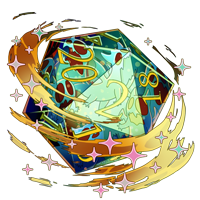

Dust
(#90256173)
Level 1 Auraboa
Click or tap to view this dragon in Predict Morphology.
Energy: 50/50

Expand the dragon details section.
Collapse the dragon details section.
Personal Style

Ancient dragons cannot wear apparel.
Skin
Scene

Measurements
Length
17.74 m
Wingspan
14.27 m
Weight
4841.24 kg
Genetics
Obsidian
Starmap (Auraboa)
Starmap (Auraboa)
Obsidian
Constellation (Auraboa)
Constellation (Auraboa)
Flaxen
Stained (Auraboa)
Stained (Auraboa)
Hatchday
Breed
Eye Type
Level 1 Auraboa
EXP: 0 / 245


STR
7
AGI
8
DEF
6
QCK
6
INT
5
VIT
8
MND
5
Biography
Dust
Cosmic dust – also called extraterrestrial dust, space dust, or star dust – is dust that occurs in outer space or has fallen onto Earth. Most cosmic dust particles measure between a few molecules and 0.1 mm (100 μm), such as micrometeoroids. Larger particles are called meteoroids. Cosmic dust can be further distinguished by its astronomical location: intergalactic dust, interstellar dust, interplanetary dust (as in the zodiacal cloud), and circumplanetary dust (as in a planetary ring). There are several methods to obtain space dust measurement.
In the Solar System, interplanetary dust causes the zodiacal light. Solar System dust includes comet dust, planetary dust (like from Mars), asteroidal dust, dust from the Kuiper belt, and interstellar dust passing through the Solar System. Thousands of tons of cosmic dust are estimated to reach Earth's surface every year, with most grains having a mass between 10−16 kg (0.1 pg) and 10−4 kg (0.1 g). The density of the dust cloud through which the Earth is traveling is approximately 10−6 dust grains/m3.
Cosmic dust contains some complex organic compounds (amorphous organic solids with a mixed aromatic–aliphatic structure) that could be created naturally, and rapidly, by stars. A smaller fraction of dust in space is "stardust" consisting of larger refractory minerals that condensed as matter left by stars.
Interstellar dust particles were collected by the Stardust spacecraft and samples were returned to Earth in 2006.
Cosmic dust – also called extraterrestrial dust, space dust, or star dust – is dust that occurs in outer space or has fallen onto Earth. Most cosmic dust particles measure between a few molecules and 0.1 mm (100 μm), such as micrometeoroids. Larger particles are called meteoroids. Cosmic dust can be further distinguished by its astronomical location: intergalactic dust, interstellar dust, interplanetary dust (as in the zodiacal cloud), and circumplanetary dust (as in a planetary ring). There are several methods to obtain space dust measurement.
In the Solar System, interplanetary dust causes the zodiacal light. Solar System dust includes comet dust, planetary dust (like from Mars), asteroidal dust, dust from the Kuiper belt, and interstellar dust passing through the Solar System. Thousands of tons of cosmic dust are estimated to reach Earth's surface every year, with most grains having a mass between 10−16 kg (0.1 pg) and 10−4 kg (0.1 g). The density of the dust cloud through which the Earth is traveling is approximately 10−6 dust grains/m3.
Cosmic dust contains some complex organic compounds (amorphous organic solids with a mixed aromatic–aliphatic structure) that could be created naturally, and rapidly, by stars. A smaller fraction of dust in space is "stardust" consisting of larger refractory minerals that condensed as matter left by stars.
Interstellar dust particles were collected by the Stardust spacecraft and samples were returned to Earth in 2006.
Click or tap a food type to individually feed this dragon only. The other dragons in your lair will not have their energy replenished.
This dragon doesn't eat Insects.
Feed this dragon Meat.
Feed this dragon Seafood.
This dragon doesn't eat Plants.
Exalting Dust to the service of the Lightweaver will remove them from your lair forever. They will leave behind a small sum of riches that they have accumulated. This action is irreversible.
Do you wish to continue?
- Names must be longer than 2 characters.
- Names must be no longer than 16 characters.
- Names can only contain letters.
- Names must be no longer than 16 characters.
- Names can only contain letters.










